Podcast: Play in new window | Download
Subscribe: Apple Podcasts | RSS
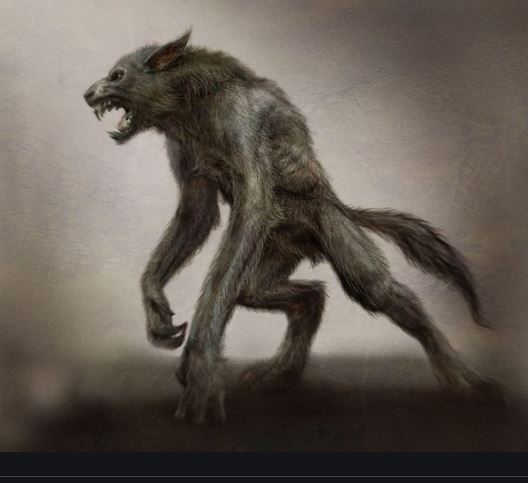 Warning shots rang out in the middle of the night. People were scared. The date was April 10th 2020. Later that night, a patrolman known only as Alfonso sent a text to a member of his family. He and three other police officers responded to a call in the Barrio Nuevo part of the town of Coita in the Mexican state of Chiapas. For days locals here and in other neighborhoods had reported strange howling noises and sightings of a strange creature, but this was the first time the police department got involved. According to officer Alfonso’s testimony, he and his three colleagues also saw what was described as a man with wolf-like features standing two meters tall. The officers saw the creature jump a 2-meter high fence in a single leap and also reported seeing it walk on rooftops. Apparently, the small town had been terrorized for well over a week, and many townsfolk had seen two or three of these creatures together. Some believed that the strange wolf-man beings came out of hiding from a nearby forest surrounding Meyapac Mountain, an area designated as a protected ecological zone in 2016. Some people in the town theorized that the creatures started to come into populated places because of increasing incursions into these local forested areas which, although protected by the government, were plagued by illegal farming and squatters. A few people thought that these werewolves were not real creatures at all but were rather forest spirits who were disturbed by the human intrusion. There were many other theories floating around during the first few weeks of April of 2020. The situation in Coita was tense.
Warning shots rang out in the middle of the night. People were scared. The date was April 10th 2020. Later that night, a patrolman known only as Alfonso sent a text to a member of his family. He and three other police officers responded to a call in the Barrio Nuevo part of the town of Coita in the Mexican state of Chiapas. For days locals here and in other neighborhoods had reported strange howling noises and sightings of a strange creature, but this was the first time the police department got involved. According to officer Alfonso’s testimony, he and his three colleagues also saw what was described as a man with wolf-like features standing two meters tall. The officers saw the creature jump a 2-meter high fence in a single leap and also reported seeing it walk on rooftops. Apparently, the small town had been terrorized for well over a week, and many townsfolk had seen two or three of these creatures together. Some believed that the strange wolf-man beings came out of hiding from a nearby forest surrounding Meyapac Mountain, an area designated as a protected ecological zone in 2016. Some people in the town theorized that the creatures started to come into populated places because of increasing incursions into these local forested areas which, although protected by the government, were plagued by illegal farming and squatters. A few people thought that these werewolves were not real creatures at all but were rather forest spirits who were disturbed by the human intrusion. There were many other theories floating around during the first few weeks of April of 2020. The situation in Coita was tense.
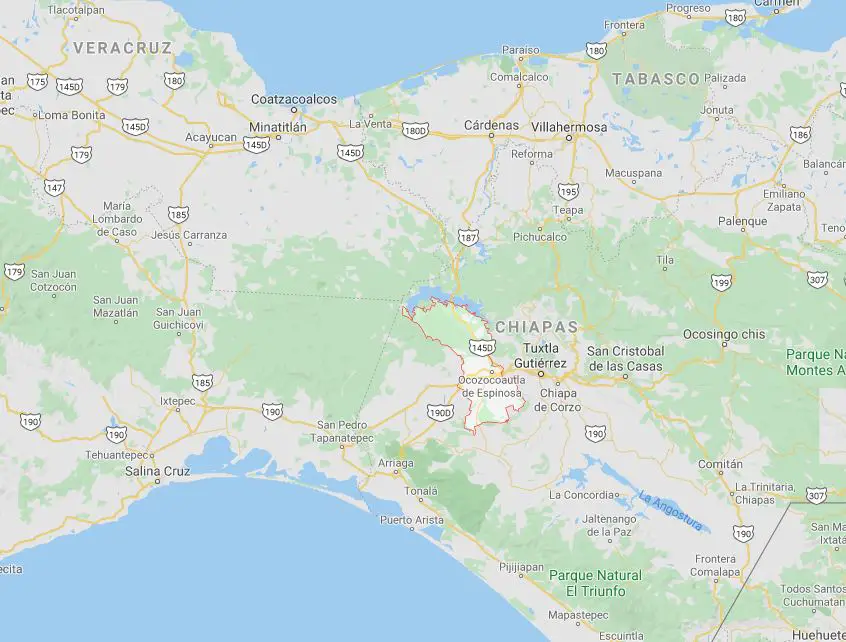 Coita’s formal name is Ocozocoautla de Espinosa and it is located in the western part of the southern Mexican state of Chiapas. The name “Ocozocoautla” comes from the Nahuatl language meaning “Forest of Ocozote Trees.” The “de Espinosa” part was added in 1928 to honor the first governor of the state of Chiapas, Raymundo Enríquez Espinosa. The town has a Nahuatl name because the region was conquered by the Aztecs in the year 1494 under the rule of the expansionistic Emperor Ahuízotl. The local indigenous group, the Zoque people, are theorized by some researchers to be the descendants of the Olmecs, Mexico’s “mother civilization.” The Zoques became subjects of the Aztec Empire and were forced to send annual tribute payments to the Aztec capital of Tenochtitlán almost 500 miles away. Aztec subjugation of the Zoque would only last a few decades. In 1523 the Zoque people were conquered by the Spanish who broke up their communal lands and enslaved most of the Zoques. Despite all of this, the Zoques never left their homeland and still live in and around the town of Coita. There are around 15,000 speakers of the Chiapas dialect of the Zoque language called O’de püt. This local indigenous group still has an intact culture with lively beliefs and legends. The rich Zoque culture of the area may serve to explain the bizarre events of April 2020.
Coita’s formal name is Ocozocoautla de Espinosa and it is located in the western part of the southern Mexican state of Chiapas. The name “Ocozocoautla” comes from the Nahuatl language meaning “Forest of Ocozote Trees.” The “de Espinosa” part was added in 1928 to honor the first governor of the state of Chiapas, Raymundo Enríquez Espinosa. The town has a Nahuatl name because the region was conquered by the Aztecs in the year 1494 under the rule of the expansionistic Emperor Ahuízotl. The local indigenous group, the Zoque people, are theorized by some researchers to be the descendants of the Olmecs, Mexico’s “mother civilization.” The Zoques became subjects of the Aztec Empire and were forced to send annual tribute payments to the Aztec capital of Tenochtitlán almost 500 miles away. Aztec subjugation of the Zoque would only last a few decades. In 1523 the Zoque people were conquered by the Spanish who broke up their communal lands and enslaved most of the Zoques. Despite all of this, the Zoques never left their homeland and still live in and around the town of Coita. There are around 15,000 speakers of the Chiapas dialect of the Zoque language called O’de püt. This local indigenous group still has an intact culture with lively beliefs and legends. The rich Zoque culture of the area may serve to explain the bizarre events of April 2020.
The stories of the strange sightings in and around the town of Coita became known to the outside world first on Twitter. An account called “Goodman,” with a picture of a young Mexican man in a black mask, had a tweet from April 11, 2020 that said this, translated from Spanish:
“I do not know if you all knew this but in Mexico there is a WHOLE town that has been sleepless for two nights because there is a werewolf. Coita, Chiapas. COVID19 will bring us bad things but the werewolf in Coita is on another level.”
People became interested, local and state news agencies started to become curious and eyewitness accounts popped up in the press. For several nights people in various parts of the town of Coita heard loud wolf-like howls and saw shadowy figures moving in the night. It got to the point where the local priest told parishioners to light candles outside their homes to try to ward off the werewolf creatures. As described earlier, these creatures are over 6 feet all, stand upright and look like the perfect combination of man and wolf. They can jump remarkably high and may travel in twos or threes. One witness claimed to see one of them jump a 9-foot wall. Another witness saw one on his roof and in the morning took pictures of the tracks. A resident living in a small rancho outside the town claimed to have shot one of the creatures but bullets did no harm to it. In most of the eyewitness accounts, sightings are accompanied by a very foul smell.
The masked Goodman sent off some other tweets elaborating on the situation. The creatures one night went on a rampage in Coita and the surrounding area. He wrote:
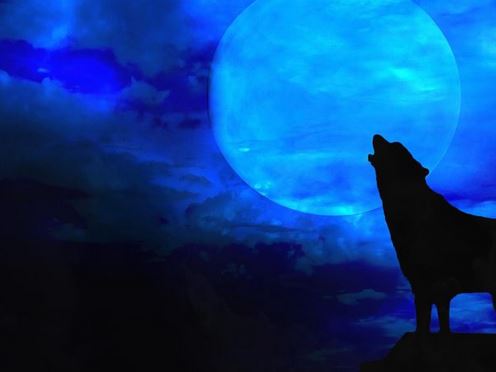 “There are three areas that are quite damaged but Villa de Allende more. Surely, due to the decrease in mobility and habitat, it (the werewolf) has approached the urban area. Villa de Allende was declared a Restricted Forest Zone in 1938 by (Mexican President) Lázaro Cárdenas. Today its legal status is uncertain.”
“There are three areas that are quite damaged but Villa de Allende more. Surely, due to the decrease in mobility and habitat, it (the werewolf) has approached the urban area. Villa de Allende was declared a Restricted Forest Zone in 1938 by (Mexican President) Lázaro Cárdenas. Today its legal status is uncertain.”
Goodman then posted a small video clip. He said it was for, “the analysis and opinion of Jaime Maussan.” Maussan has been famous for decades throughout Mexico for his television shows on paranormal topics with a specific interest in UFO research. Goodman’s clip was one of many found throughout video sharing platforms allegedly featuring the images and howls of this modern Mexican werewolf. Some of these clips are poorly crafted and are obvious hoaxes. As with any other uncommon incident, pranksters and fakers come out of the woodworks and post video clips online for clicks and in hopes that their little 20-second gem will go viral and make them famous. This sort of thing makes it harder for the real researcher to sift through everything to make sense out of it all.
Where does the whole concept of a werewolf come from? Stories of men shape-shifting into wolves date back to classical European antiquity. The ancient Greek historian Herodotus wrote about a tribe called the Neuri who lived in Scythia, in central Eurasia. Members of this tribe would all change into wolves once a year for several days and return back into their human forms. Other Classical authors such as Pliny the Elder and Virgil mentioned cases of men turning into wolves in their writings. Beyond Classical Europe, werewolf lore is found in many other European cultures from the Germans to the Norse to the Celts to the Slavs. With the spread of Christianity throughout Europe, the idea of the werewolf became associated with magic and witchcraft. People were accused of being werewolves by both civic and church authorities and were imprisoned and executed. During Europe’s Middle Ages werewolf sightings were common and it was during this time when these creatures split off into two different types. In Germanic and western parts of Europe, the werewolf was seen as a shape-shifting sorcerer. In the Slavic East, a werewolf creature called the vlkolak was a corpse of a man that came to life much like a vampire and assumed a wolf-like form. Because the werewolf legend was all over Europe, Spain had it, too, and with Spanish and other European settlers establishing themselves in Mexico, the werewolf found new hunting grounds in the New World.
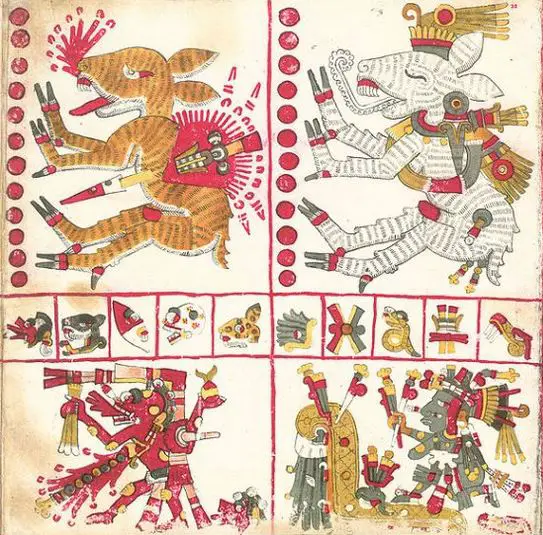 The Mexicans already had a shape-shifting man-beast creature across the many cultures that flourished before the Spanish. The Zoques of Chiapas was one such culture. In the Zoque religious belief system, they had a creature similar to the Aztec notion of the Nagual. For most of the recorded history of this phenomenon, the nagual has been considered a powerful person who, through the use of what is collectively known as “witchcraft”, changes into an animal or causes other people to think that he or she has changed. The term nagual has also been used by some Mesoamerican groups to denote a lifetime spirit guide represented by a real-world animal. The notion that the nagual is a cryptid, or unknown animal, is a more recent belief, as old memories of the real meanings of nagualism have died out or become murky down through the generations. Folk tales of legendary beasts and shape-shifters have changed over time.
The Mexicans already had a shape-shifting man-beast creature across the many cultures that flourished before the Spanish. The Zoques of Chiapas was one such culture. In the Zoque religious belief system, they had a creature similar to the Aztec notion of the Nagual. For most of the recorded history of this phenomenon, the nagual has been considered a powerful person who, through the use of what is collectively known as “witchcraft”, changes into an animal or causes other people to think that he or she has changed. The term nagual has also been used by some Mesoamerican groups to denote a lifetime spirit guide represented by a real-world animal. The notion that the nagual is a cryptid, or unknown animal, is a more recent belief, as old memories of the real meanings of nagualism have died out or become murky down through the generations. Folk tales of legendary beasts and shape-shifters have changed over time.
The Spanish historian Orozco y Berra writing in the later colonial period had this to say about the shape-shifting Mexican werewolf creature:
“The nahual is generally an old Indian with red eyes, who knows how to turn himself into a dog, woolly, black and ugly. The female witch can convert herself into a ball of fire; she has the power of flight, and at night will enter the windows and suck the blood of little children. These sorcerers will make little images of rags or of clay, then stick into them the thorn of the maguey and place them in some secret place; you can be sure that the person against whom the conjuration is practiced will feel pain in the part where the thorn is inserted. There still exist among them the medicine-men, who treat the sick by means of strange contortions, call upon the spirits, pronounce magical incantations, blow upon the part where the pain is, and draw forth from the patient thorns, worms, or pieces of stone. They know how to prepare drinks which will bring on sickness, and if the patients are cured by others the convalescents are particular to throw something of their own away, as a lock of hair, or a part of their clothing. Those who possess the evil eye can, by merely looking at children, deprive them of beauty and health, and even cause their death.”
For more information on the Nagual, please see Mexico Unexplained episode number 36. https://mexicounexplained.com//the-nagual/
Besides the idea of the Nagual or something similar to it, the Zoque tradition of Chiapas tells of elemental spirits of the forest and surrounding nature. The pervasiveness of indigenous Zoque culture in the area is the reason why many people, whether purely Zoque or not, suspect that the werewolf or werewolves in and around Coita are manifestations of forest spirits that have somehow become restless or upset. Some believe that perhaps the people of the town also conjured up the werewolf forest spirits themselves by thinking bad thoughts or by having ill intentions. Locals more inclined to believe in the forest spirit explanation told outsiders that the key to ending this werewolf terror is simple: Go to the forest and humbly ask forgiveness of any spirits who may have felt harm done to them.
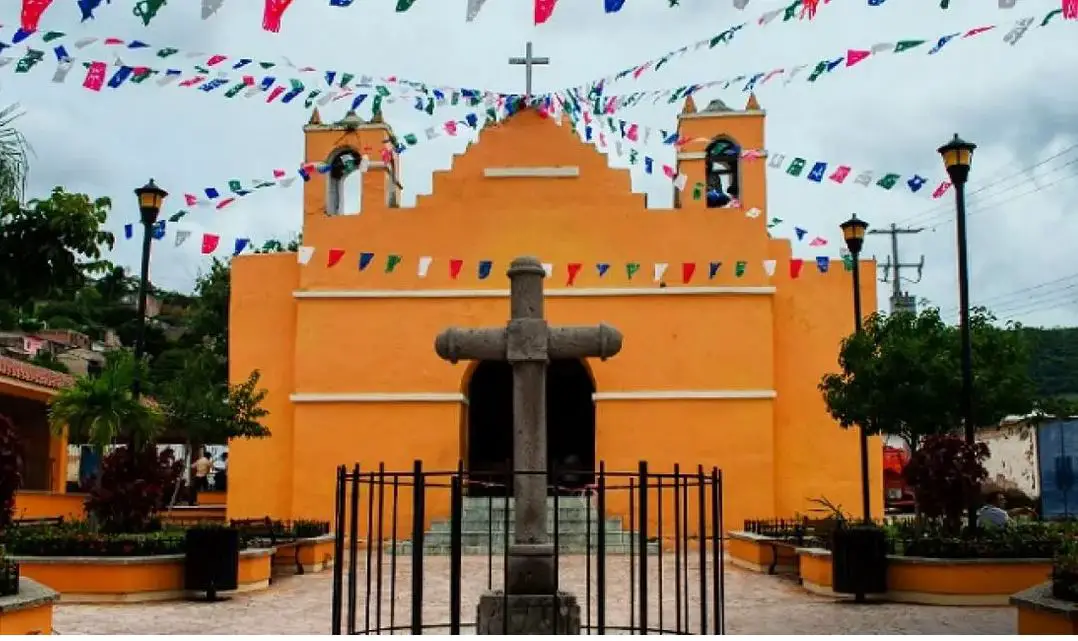 There is another explanation for what happened in Coita besides those involving naguals, forest spirits or actual European-style werewolves. In an April 11, 2020 interview with the newspaper Alerta Chiapas gestalt psychotherapist Dulce Bonifaz had another possible explanation. She claimed that the town was experiencing a form of mass psychosis. In the newspaper article Dr. Bonifaz said that because the town was facing the unknowns of the COVID-19 pandemic and the stressful restrictions of the Mexican government’s “Quédate en casa” stay-at-home order, the people of Coita projected their fears and pulled something out of their collective imagination to focus them on. The psychotherapist further explained that this was exaggerated by some stressed-out people who would have normally been asleep and were awake and listening to nighttime sounds they normally never would have heard. Thus, a horrible monster was created in the minds of the people as a subconscious way to release fear and anxiety from the situation regarding the coronavirus.
There is another explanation for what happened in Coita besides those involving naguals, forest spirits or actual European-style werewolves. In an April 11, 2020 interview with the newspaper Alerta Chiapas gestalt psychotherapist Dulce Bonifaz had another possible explanation. She claimed that the town was experiencing a form of mass psychosis. In the newspaper article Dr. Bonifaz said that because the town was facing the unknowns of the COVID-19 pandemic and the stressful restrictions of the Mexican government’s “Quédate en casa” stay-at-home order, the people of Coita projected their fears and pulled something out of their collective imagination to focus them on. The psychotherapist further explained that this was exaggerated by some stressed-out people who would have normally been asleep and were awake and listening to nighttime sounds they normally never would have heard. Thus, a horrible monster was created in the minds of the people as a subconscious way to release fear and anxiety from the situation regarding the coronavirus.
What of the tracks on the roof? What about the video and sound recordings? Were they pranks, mental projections or the result of manifestations of a creature from an ancient indigenous past? For now, the town of Coita is quiet at night, with some people waiting anxiously for the werewolves to return.
REFERENCES
Alerta Chiapas (newspaper online in Spanish)
El Sol de Chiapas (newspaper online in Spanish)
Mysterious Universe Web Site
